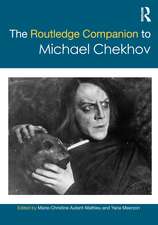Early English Viols: Instruments, Makers and Music: Music and Material Culture
Autor Michael Fleming, John Bryanen Limba Engleză Hardback – 16 noi 2016
Musical repertory of great importance and quality was performed on viols in sixteenth- and early seventeenth-century England. This is reported by Thomas Mace (1676) who says that ’Your Best Provision’ for playing such music is a chest of old English viols, and he names five early English viol makers than which ’there are no Better in the World’. Enlightened scholars and performers (both professional and amateur) who aim to understand and play this music require reliable historical information and need suitable viols, but so little is known about the instruments and their makers that we cannot specify appropriate instruments with much precision. Our ignorance cannot be remedied exclusively by the scrutiny or use of surviving antique viols because they are extremely rare, they are not accessible to performers and the information they embody is crucially compromised by degradation and alteration. Drawing on a wide variety of evidence including the surviving instruments, music composed for those instruments, and the documentary evidence surrounding the trade of instrument making, Fleming and Bryan draw significant conclusions about the changing nature and varieties of viol in early modern England.
| Toate formatele și edițiile | Preț | Express |
|---|---|---|
| Paperback (1) | 426.83 lei 6-8 săpt. | |
| Taylor & Francis – 5 feb 2019 | 426.83 lei 6-8 săpt. | |
| Hardback (1) | 1132.83 lei 6-8 săpt. | |
| Taylor & Francis – 16 noi 2016 | 1132.83 lei 6-8 săpt. |
Preț: 1132.83 lei
Preț vechi: 1381.51 lei
-18% Nou
Puncte Express: 1699
Preț estimativ în valută:
216.84€ • 235.61$ • 182.26£
216.84€ • 235.61$ • 182.26£
Carte tipărită la comandă
Livrare economică 21 aprilie-05 mai
Preluare comenzi: 021 569.72.76
Specificații
ISBN-13: 9781472468543
ISBN-10: 1472468546
Pagini: 422
Ilustrații: Ashgate 5k; 5 Line drawings, black and white; 31 Halftones, color; 82 Halftones, black and white
Dimensiuni: 174 x 246 x 25 mm
Greutate: 1.13 kg
Ediția:1
Editura: Taylor & Francis
Colecția Routledge
Seria Music and Material Culture
Locul publicării:Oxford, United Kingdom
ISBN-10: 1472468546
Pagini: 422
Ilustrații: Ashgate 5k; 5 Line drawings, black and white; 31 Halftones, color; 82 Halftones, black and white
Dimensiuni: 174 x 246 x 25 mm
Greutate: 1.13 kg
Ediția:1
Editura: Taylor & Francis
Colecția Routledge
Seria Music and Material Culture
Locul publicării:Oxford, United Kingdom
Cuprins
Contents
Note to Readers
1 ‘English viols are the ones which one normally plays’: Researching Early English viols
2 ‘Choice Consorts … (Rare Chests of Viols)’: The Evidence of the Repertory
3 ‘We chiefly Value Old Instruments’: Extant Old English Viols
4 ‘This way will I disrobe the images’: Images of Viols
5 ‘Such as now do lawfully exercise any art, mistery, or manual occupation’: Viol Making as a Job
6 ‘These were Old’: Early English Viol Makers
7 ‘Let Viol-makers take notice hereof’: Viol Makers’ Physical Resources
8 ‘I will search impossible places’: The Future for Early English Viols
Bibliography
Note to Readers
1 ‘English viols are the ones which one normally plays’: Researching Early English viols
2 ‘Choice Consorts … (Rare Chests of Viols)’: The Evidence of the Repertory
3 ‘We chiefly Value Old Instruments’: Extant Old English Viols
4 ‘This way will I disrobe the images’: Images of Viols
5 ‘Such as now do lawfully exercise any art, mistery, or manual occupation’: Viol Making as a Job
6 ‘These were Old’: Early English Viol Makers
7 ‘Let Viol-makers take notice hereof’: Viol Makers’ Physical Resources
8 ‘I will search impossible places’: The Future for Early English Viols
Bibliography
Notă biografică
Michael Fleming, after graduating from the Queen’s College, Oxford, worked for Robert Goble & Son for five years, making early keyboard instruments. Since 1982 he has worked as an independent musical instrument maker, specializing in viols and bows. In 1986 he was joint recipient of the Best Maker prize at the Crafts Council Open Exhibition, London. Fleming was a member of an Expert Group drafting the Museums and Galleries Commission guidance: Standards in the Museum Care of Musical Instruments (published 1995). Since 2004 he has worked onThe Galpin Society Journal (international journal of organological research), including five years as editor. He has contributed to standard reference works such as Grove and ODNB, and published articles in Early Music, The Galpin Society Journal, The Viola da Gamba Society Journal and elsewhere.
John Bryan is Head of Music at the University of Huddersfield, where he was awarded a higher doctorate for his practice-based research in 2015. Following study at the University of York, he has developed a career that encompasses performance, research and teaching in equal measure. His research has been published in articles for Early Music and The Journal of Musicology, and a book chapter for Ashgate. He has taught early music at the Universities of York, Leeds and Hull, founded the North East Early Music Forum and coached viol consort performance at Dartington International Summer School. As a performer, he has worked with many leading ensembles since the 1970s, including the Rose Consort of Viols, Musica Antiqua of London, I Fagiolini and the Consort of Musicke, with whom he has made some 40 CDs, given many radio recordings, and appeared at international festivals in USA, Canada and throughout Europe. His performance focus is on music for viols, but he also plays Renaissance woodwind and harpsichord, and regularly directs and conducts early music performances. He has contributed to a range of programmes on BBC Radios 3 and 4, and is an Artistic Adviser to York Early Music Festival, which he helped to found.
John Bryan is Head of Music at the University of Huddersfield, where he was awarded a higher doctorate for his practice-based research in 2015. Following study at the University of York, he has developed a career that encompasses performance, research and teaching in equal measure. His research has been published in articles for Early Music and The Journal of Musicology, and a book chapter for Ashgate. He has taught early music at the Universities of York, Leeds and Hull, founded the North East Early Music Forum and coached viol consort performance at Dartington International Summer School. As a performer, he has worked with many leading ensembles since the 1970s, including the Rose Consort of Viols, Musica Antiqua of London, I Fagiolini and the Consort of Musicke, with whom he has made some 40 CDs, given many radio recordings, and appeared at international festivals in USA, Canada and throughout Europe. His performance focus is on music for viols, but he also plays Renaissance woodwind and harpsichord, and regularly directs and conducts early music performances. He has contributed to a range of programmes on BBC Radios 3 and 4, and is an Artistic Adviser to York Early Music Festival, which he helped to found.
Recenzii
"The book stands out for its exceptional in-depth scholarship that presents extensive primary source materials and new research, and brings fresh perspectives to our understanding and appreciation of early English viols. The authors’ well-written narrative conveys the history and development of the English viol, set in the cultural and social contexts of the 16th and early 17th centuries, in ways that engage and enlighten the reader. In addition, this excellent and deluxe publication is also notable for its high-quality photographs of instruments and documents printed on fine glossy paper. Congratulations go to the authors, Michael Fleming and John Bryan."
- American Musical Instrument Society Nicholas Bessaraboff Prize Committee
- American Musical Instrument Society Nicholas Bessaraboff Prize Committee
Descriere
Music of great importance and quality was performed on viols in sixteenth- and early seventeenth-century England. Thomas Mace (1676) writes that ‘old English viols’ are ideal, and names five English makers than whom ‘there are no Better in the World’. To understand and play this music we need reliable information and suitable viols. Neither can be derived exclusively from old instruments because of their rarity, inaccessibility, and degradation by time, use and alteration. Using a wide variety of evidence including the viols, their music, and documentary evidence surrounding the trade of instrument making, Fleming and Bryan illuminate the changing nature of viols in early modern England.
























